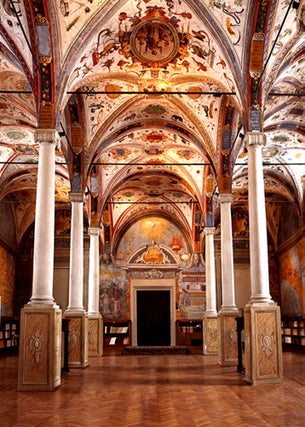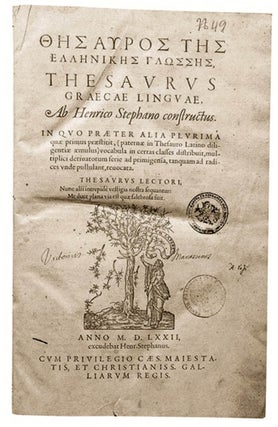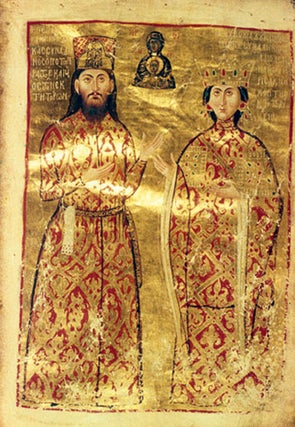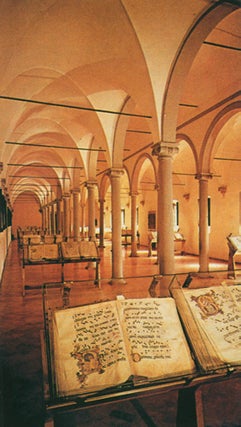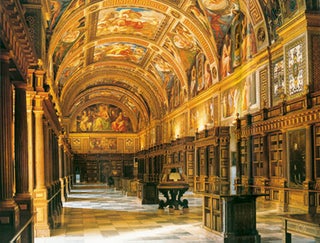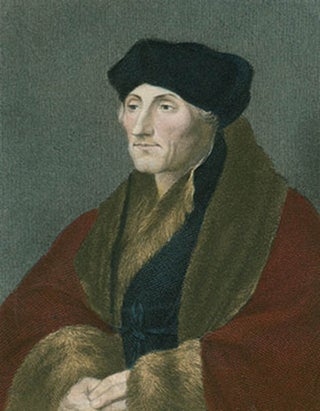THE HISTORY OF THE LIBRARY IN WESTERN CIVILIZATION: THE RENAISSANCE - FROM PETRARCH TO MICHELANGELO.
V.
- New Castle, Delaware: Oak Knoll Press and HES & DE GRAAF Publishers BV, 2012.
- 8.5 x 11.5 inches
- hardcover, dust jacket
- 624 pages
- ISBN: 1584561823
- ISBN: 9781584561828
Price: $60.00 other currencies
Order Nr. 76546
"For persons interested in libraries who wish to immerse themselves in lush detail, From Petrarch to Michelangelo shines in terms of sheer visual splendor. As is the case with the other four volumes, each chapter is lavishly illustrated with an abundance of glossy full color and black-and-white photographs that depict books and manuscripts, library architecture, and historical figures. For those interested in a visual history of libraries and print culture, this volume is a treat."
- RBM: A Journal of Rare Books, Manuscripts, and Cultural Heritage
With the publication of Volume V, the last stage in the development of the library is revealed. Like the rest of the books in The History of the Library series, this volume is beautifully designed and fully illustrated in color.
This fifth and final volume of The History of the Library in Western Civilization contains eight chapters giving a comprehensive account of the transition from the Middle Ages to the Renaissance and the effects of the revival of interest in the Greco-Roman tradition on the European cultural scene, at both the secular and religious level.
The first chapter looks at the early exponents of humanism in Europe and assesses their role in the revival and promotion of classical thinking. It also describes the particular characteristics of the books in the libraries of pioneers of the humanist movement, such as Petrarch, Boccaccio, and Leonzio Pilato, and the organization of the first bilingual library of the Renaissance by Palla Strozzi in Florence.
With Byzantine scholars leaving Constantinople and settling at first in Italy, bringing their fine collections of books with them, the second chapter describes the 'brain drain' from East to West in the fifteenth century. It discusses the systematic study and diffusion of the Greek language, while including brief historical accounts of three humanistic libraries: those of Novello Malatesta and Cardinal Bessarion, and the Vatican Library. Three more great libraries: those of King Matthias Corvinus, Janus Pannonius, and the Medici family are described in the third chapter, as the part played by the invention of printing in the spread of learning and the formation of libraries is explored.
The fourth chapter describes the character of French humanism and the role of the scholarly circle in Paris that sowed the seeds of humanist learning, and gives the salient facts about its leading members. There is a section on the formation of the French royal library, its contents, and the persons chiefly responsible for its growth, and another dealing with the contribution made by French printers to the spread of humanism and of books in general.
With a long section on Erasmus, the fifth chapter examines his study of scholarly books, his work as an editor, his edition of the New Testament, and the manuscripts that provided him with his material. Erasmus's correspondence with civic and ecclesiastical dignitaries, scholars, and printers around Europe implies the existence of a 'common library' shared by the humanists. Also in the fifth chapter is a discussion of Geneva's position as a publishing centre of books by Reformers and a refuge for those who supported Luther and Calvin's objections to the practices of the Catholic Church.
The next chapter is chiefly concerned with those parts of every library that contained copies of the new Christian literature embodied in the writings of the Reformation and Counter-Reformation, new translations of the Bible into the vernacular, and the many books written about religious disputes. It covers the dispersal of the monastic libraries in England and discusses the libraries of men of letters and scholars throughout Europe. Furthermore, in the seventh chapter, insight is given into the nature of the new libraries created in the late sixteenth century, containing contemporary pity works and prose and verse adaptations of medieval classics in booklet form. It concludes with a chronicle of the founding of the Oxford University library by Sir Thomas Bodley.
The final chapter oversees the Renaissance library architecture and the great changes in library design that resulted from the creation of many public libraries and the opening of libraries generally to a wider public. The three-aisled library, designed by Michelozzo, is introduced, and its influence on monastic libraries in Italy, and to the libraries designed by Domenico Fontana, Jacopo Sansovino, Michelangelo, and others is explained.
Sales Rights: Worldwide.
Order all five volumes of The History of the library in Western Civilization series at one time and get the Index volume for free.


